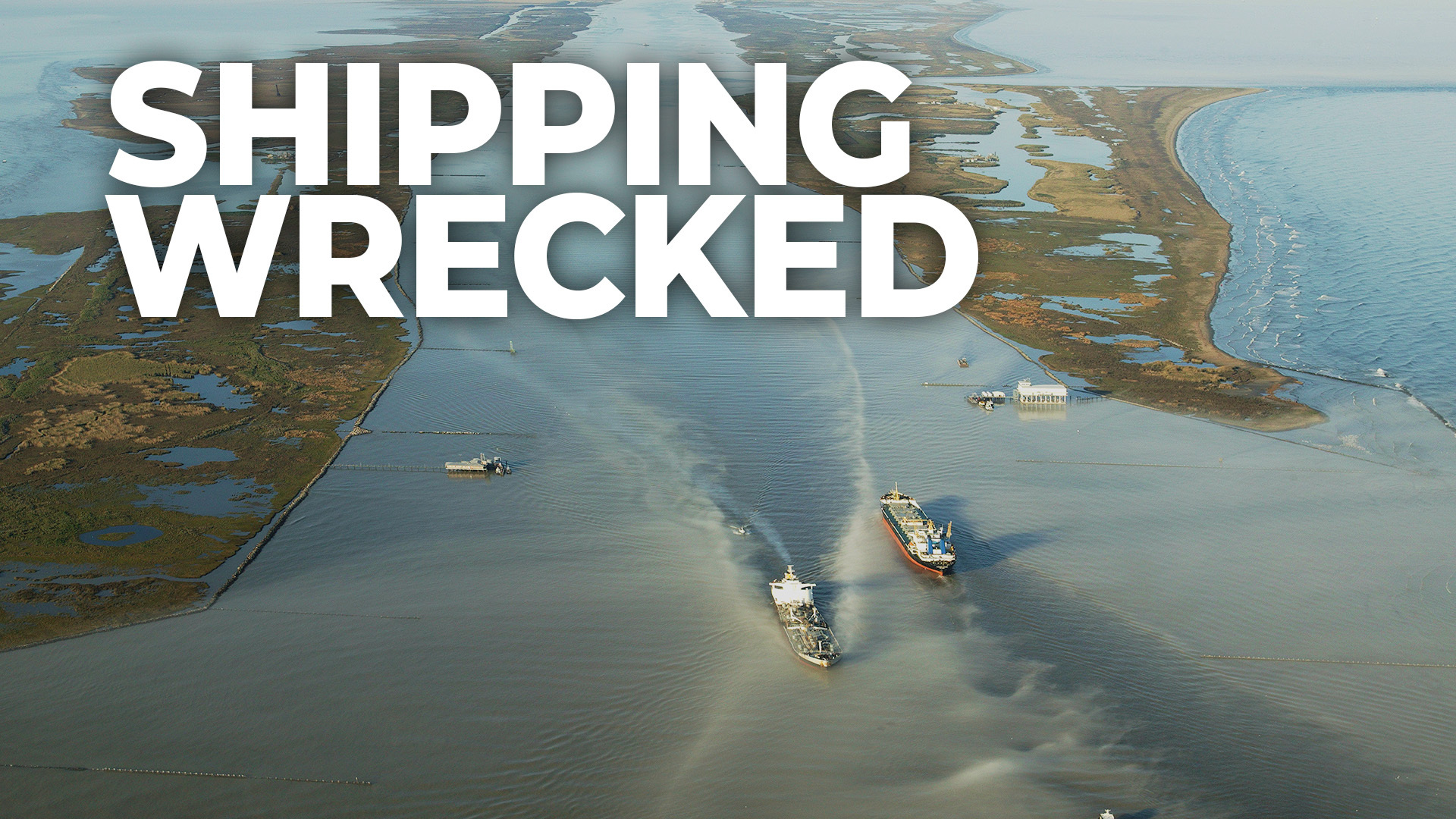
SHANNON LONGWORTH: THE MIGHTY MISSISSIPPI RIVER IS BOTTOMING OUT.
BARGES ARE GROUNDING ON SANDBARS OR GETTING STUCK IN DRY PORTS THAT ARE USUALLY FLOWING WITH WATER.
NOW, WORKERS ARE DREDGING THE RIVER TO MAKE IT DEEPER FOR SHIPPING VESSELS – ALL TO TRY AND KEEP GOODS FLOWING.
SO HOW DID WE GET HERE? LET ME EXPLAIN.
NEARLY 82 PERCENT OF THE COUNTRY IS FACING AT LEAST ABNORMALLY DRY CONDITIONS.
AND THE MIDWEST DROUGHT IS DRYING UP THE MISSISSIPPI’S TRIBUTARIES…WHICH SERVE AS A CRITICAL FREIGHT ARTERY FOR THE COUNTRY.
JOHNATHAN REMO IS THE ASSOCIATE PROFESSOR AND PROGRAM DIRECTOR OF ENVIRONMENTAL RESOURCE AND POLICY PH.D. PROGRAM AT SOUTHERN ILLINOIS UNIVERSITY. HE’S BEEN STUDYING THE MISSISSIPPI FOR TWENTY YEARS AND SAYS “IN THE NEAR TERM THE WATER LEVELS WILL SLOWLY DECREASE ALONG MOST OF THE MISSISSIPPI RIVER BECAUSE WE HAVEN’T HAD ANY SUBSTANTIAL RAIN IN A LARGE PORTION OF THE BASIN FOR A FAIR AMOUNT OF TIME.”
SHANNON LONGWORTH: REMO IS A HYDROLOGIST, OR A RIVER SCIENTIST. HE SAYS THE MISSISSIPPI HAS NOW BROKEN THE RECORD LOW, AT NEGATIVE 10.75 FEET, BEATING THE PREVIOUS RECORD SET IN 1988. HE SAYS WHAT IS SURPRISING, IS THE TIMING. HE SAYS THESE LOWS USUALLY HAPPEN IN NOVEMBER, DECEMBER AND JANUARY.
ACCORDING TO THE U.S. DEPARTMENT OF AGRICULTURE’S WEEKLY TRANSPORTATION REPORT, SOUTHBOUND BARGE TONNAGES–OR, THE WEIGHT OF THEIR CARGO WAS REDUCED ON THE RIVER BY MORE THAN 20%. IT WAS TO KEEP AMERICA’S VITAL WATERWAY ACTIVE.
REMOS SAYS THIS IS IMPORTANT BECAUSE, “WE MOVE MOST OF OUR COMMODITIES THE LAST NUMBER I SAW WE MOVE 500 MILLION TONS OF COMMODITIES DOWN THE MISSISSIPPI RIVER PRIMARILY AGRICULTURAL COMMODITIES NUMBER ONE BEING SOYBEANS NUMBER TWO BEING CORN THERE’S ALSO A LOT OF FUEL THAT MOVES UP AND DOWN THE RIVER.”
ACCORDING TO THE USDA – COMMODITIES MOVED BY BARGE DOWN THE MISS INCLUDE 47% OF ALL U.S. GRAIN, 35% OF IT’S THERMAL COAL AND 5.4 MILLION BARRELS OF CRUDE OIL.
THE COST OF SENDING GOODS IS ALSO INCREASING. ONE TON OF CORN, SOYBEANS OR OTHER GRAINS FROM ST. LOUIS TO SOUTHERN LOUISIANA HAS MORE THAN TRIPLED IN THE LAST YEAR.
WHAT’S MOST SHOCKING IS THAT IN JUST THE LAST MONTH…IT’S DOUBLED…GOING FROM NEARLY FIFTY DOLLARS A TON TO OVER ONE HUNDRED DOLLARS A TON.
AND EXPERTS SAY THOSE SUPPLY CHAIN COSTS WILL BE PASSED ON TO YOU. REMO WARNS, “THERE WOULD BE LARGE ECONOMIC IMPACTS ESPECIALLY TO THE CENTRAL PORTION OF THE COUNTRY BUT IT WOULDN’T SHUT DOWN THE TOTAL COUNTRY BECAUSE WE STILL HAVE RAIL AND TRUCKS BUT IT DOES MAKE IT MORE EXPENSIVE TO MOVE THESE COMMODITIES LIKE I MENTIONED, CORN AND SOYBEAN, DIESEL FUEL THINGS LIKE THAT WHICH WOULD PROBABLY INCREASE PRICES.”






